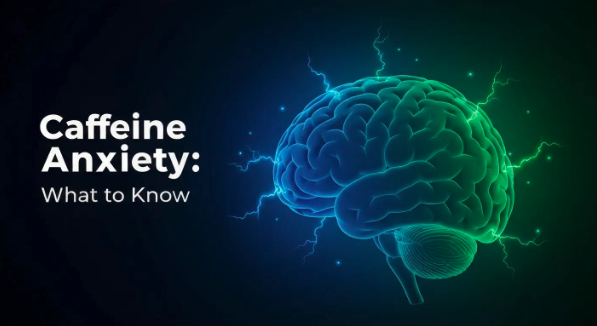Early Signs of Personality Disorders in Adolescents
Discover personality disorders in adolescents: early signs and interventions for healthier futures.


Understanding Personality Disorders in Adolescents
Overview of Personality Disorders
Personality disorders in adolescents are often marked by enduring unhealthy behaviors, patterns of thought, and internal experiences. These patterns develop early in life and can be challenging to change. Young individuals with these disorders may exhibit difficulty in relationships and increased instability in school or work environments. Experts identify four key features of personality disorders:
Key FeaturesUnhealthy patterns of thinkingDifficulty in relating to othersNegative impacts on family connectionsSocial life and academic progress
The difficulties experienced by adolescents can hinder their overall mental health and general well-being. The emerging personality disorders in youth are considered such because they are still forming during adolescence, and many teens have not yet received a formal diagnosis at this stage of their lives [1].
Impact on Teens
The impact of personality disorders during adolescence is significant, as these disorders usually begin at this stage of life. They can disrupt the development of a teen's identity, relationships, and emotion regulation, potentially leading to social isolation and substance abuse [2].
Adolescents with Borderline Personality Disorder may experience intense episodes of anger, depression, and anxiety, lasting from hours to days. They may also display suicidal behavior or threats and engage in self-harming behavior [1].
Untreated psychiatric disorders in teenagers can lead to high-risk behaviors such as binge drinking, unprotected sex, or driving under the influence of drugs or alcohol. Teens struggling emotionally may find it challenging to regulate their behaviors without proper treatment and guidance [3]. Addressing these disorders early can help mitigate their impact, fostering healthier emotional and social development in adolescents.
For more detailed insights on personality disorders, the cluster system of personality disorders explained can provide additional context.

Recognizing Early Signs
Understanding the early signs of personality disorders in adolescents is crucial for timely intervention. Identifying specific behavioral patterns and emotional instability can help caregivers and professionals recognize potential issues.
Behavioral Patterns
Behavioral patterns in adolescents can serve as indicators for emerging personality disorders. It's important to differentiate between typical rebelliousness and behavior that may signify a deeper issue. Key signs include:
Behavioral IndicatorDescriptionEnduring BehaviorBehaviors that are long-lasting, extending over time, rather than fleeting moments of rebellion.Extreme ReactionsIntense responses to situations that are disproportionate to the stressor.Emotional RangeFrequent mood swings that encompass a wide variety of emotional responses, from anger to depression and anxiety.
Adolescents with evolving personality disorders often demonstrate behaviors that go beyond typical teenage angst. For instance, lashing out, isolation from friends and family, or participation in risky activities may all serve as warning signals. Parents and guardians should monitor these signs and engage in discussions when concerning patterns arise, as indicated by Georgetown Behavioral Health Institute.
Emotional Instability
Emotional instability is another significant sign of potential personality disorders in teenagers. This can manifest as intense emotional reactions that often seem overwhelming. For example, an adolescent might experience episodes of:
These emotional responses can fluctuate frequently throughout the day, lasting from hours to days before calming down. In some cases, teens may also exhibit self-harming behaviors or express suicidal thoughts [1].
Recognizing these emotional patterns can provide insight into the mental well-being of adolescents. If their emotional fluctuations coincide with risky behaviors or substance use, it could signal the need for professional evaluation. Self-harming behaviors and suicidal threats should always prompt immediate concern and intervention. Addressing these issues early can lead to better outcomes through appropriate treatments, such as those outlined in mentalization-based treatment for personality disorders and schema therapy for personality disorders.
In conclusion, it is essential to remain vigilant about the early signs of personality disorders in adolescents, including behavioral patterns and emotional instability. Accurate observation and timely communication can facilitate necessary clinical interventions.
Diagnosing Personality Disorders in Teens
The diagnosis of personality disorders in adolescents requires careful consideration of specific criteria and an understanding of the classifications provided by the DSM-5. Identifying these disorders early allows for timely intervention and support.
Criteria for Diagnosis
To diagnose a personality disorder in teens, they must meet the criteria established by the DSM-5. Symptoms must cause difficulty in daily functioning and significant distress. Additionally, both distress and impairment must affect at least two of the four key areas related to personality disorders, which include:
The DSM-5 allows for the diagnosis of a personality disorder, including Borderline Personality Disorder (BPD), in individuals under 18 years of age, provided that symptoms are pervasive, persistent, and have been present for at least one year.
DSM-5 Clusters and Disorders
The DSM-5 categorizes personality disorders into three clusters, each representing a distinct set of characteristics and behaviors:
ClusterDescriptionDisordersCluster AOdd, bizarre, and eccentric behaviorParanoid, Schizoid, SchizotypalCluster BDramatic, overly emotional, or unpredictable behaviorAntisocial, Borderline, Histrionic, NarcissisticCluster CAnxious and fearful behaviorAvoidant, Dependent, Obsessive-Compulsive
Each cluster contains specific disorders with unique traits and symptomatology, which can significantly affect an adolescent's life. For further detailed understanding, explore our article on the cluster system of personality disorders explained.
The significance of recognizing these early signs cannot be overstated. Awareness of the diagnosis criteria and understanding the clusters in the DSM-5 can guide caregivers, educators, and mental health professionals in providing the necessary support and interventions for adolescents experiencing these severe challenges.
Risks of Untreated Disorders
Understanding the risks associated with untreated personality disorders in adolescents is crucial. These disorders can significantly influence various aspects of a teen's life, including academic performance and the likelihood of substance abuse.
Academic Performance
Untreated psychiatric disorders often lead to reduced academic performance. The negative physical and emotional manifestations of these conditions can hinder a teen's ability to excel or focus in school, resulting in falling grades and a lack of academic progress [3].
Academic ImpactEffect DescriptionDeclining GradesStudents may struggle with maintaining their grades due to distraction and emotional instability.Difficulty ConcentratingIssues with focus can make it hard for teens to complete assignments or absorb new information.Decreased MotivationA lack of interest in academics may arise, leading to disengagement from school activities.
Substance Abuse
Teens with untreated personality disorders are at an increased risk of engaging in high-risk behaviors, including substance abuse. This can manifest in various forms, such as binge drinking, using drugs, or engaging in unprotected sexual activity. Emotional distress often drives adolescents to seek unhealthy coping mechanisms, further exacerbating their conditions [3].
Substance Abuse FactorDescriptionIncreased RiskAdolescents may turn to drugs and alcohol as a way to self-medicate emotional pain.Potential for AddictionEarly exposure to substance use can lead to long-term patterns of addiction.Behavioral ChallengesDifficulty regulating emotions can lead to impulsive actions and further risky decisions.
Addressing personality disorders early can prevent these serious outcomes and promote healthier coping strategies, emotional regulation, and academic success. Further exploration of treatments such as dialectical behavior therapy (DBT) for borderline personality disorder and mentalization-based treatment for personality disorders can provide effective avenues for intervention. For more insights on related topics, consider reviewing articles on the impact of childhood trauma on personality disorder development and the controversy surrounding personality disorder diagnoses.
Interventions and Treatments
Addressing personality disorders in adolescents requires a comprehensive approach that includes both therapeutic modalities and, when necessary, medication. Effective interventions can significantly improve the quality of life and functioning of young individuals facing these challenges.
Therapeutic Modalities
Psychotherapeutic interventions serve as the first-line treatment for adolescents diagnosed with personality disorders, particularly those with symptoms of Borderline Personality Disorder (BPD). A variety of therapeutic approaches are utilized, each designed to address different aspects of the disorder:
Therapeutic ApproachDescriptionKey FocusDialectical Behavior Therapy (DBT)Specifically developed for BPD, DBT combines individual therapy with group skills training.Emotion regulation, distress tolerance, interpersonal effectiveness.Cognitive Behavioral Therapy (CBT)Aims to change negative thought patterns and behaviors through structured sessions.Identifying and altering dysfunctional beliefs.Mentalization-Based Treatment (MBT)Encourages individuals to understand their own and others’ mental states.Improving interpersonal relationships and emotional responses.Schema TherapyAddresses deep-seated patterns (schemas) formed in childhood that impact behavior and relationships.Identifying maladaptive schemas and modifying them.Group TherapyProvides a platform for individuals to share experiences and learn from peers.Building social skills, peer support, and behavioral insights.
Preventative strategies also play a crucial role, as early detection and intervention, such as through specific programs like the HYPE clinic, can be beneficial for adolescents demonstrating early signs of BPD [5].
Medication Use
While psychotherapeutic approaches are primarily employed, medication can also be a part of the treatment plan for adolescents with personality disorders. Although no medications are specifically approved by the FDA for treating BPD, certain medications may help alleviate co-occurring symptoms related to mood disorders, anxiety, and depression. These can include:
Medication TypePurposeAntidepressantsTo manage symptoms of depression or anxiety.Mood StabilizersHelpful for managing mood swings and irritability.AntipsychoticsMay be used in cases of severe symptoms, such as psychosis.
It is essential for treatment plans to be personalized, and medication should be closely monitored by healthcare professionals. Importantly, adolescents are usually advised to rely primarily on therapeutic modalities, such as dialectical behavior therapy (DBT) for borderline personality disorder and mentalization-based treatment for personality disorders, which have proven effective in managing symptoms.
Incorporating both therapeutic treatments and medication, when appropriate, can lead to improved management of personality disorders in adolescents, fostering better emotional and social outcomes.
Specific Focus: Borderline Personality Disorder
Symptoms and Characteristics
Borderline Personality Disorder (BPD) is a mental health condition that significantly impacts adolescents. It affects approximately 0.9% to 3% of individuals under 18 years old, with this number possibly being higher due to misdiagnosis with conditions like PTSD, ADHD, bipolar disorder, or depression [6]. Adolescents with BPD commonly experience intense emotional episodes, including anger, depression, and anxiety, that can last from hours to days.
Other symptoms may include:
The unique nature of BPD can create challenges in diagnosing, particularly for boys, who may be misdiagnosed or underdiagnosed. Around 20% of males in the criminal justice system may have BPD [6]. Symptoms can be accurately identified during adolescence, with symptomatology remaining consistent into adulthood.
SymptomDescriptionEmotional DysregulationIntense and unstable emotional experiencesSelf-harmDeliberate self-injury or suicidal behaviorIdentity DisturbanceRapid changes in self-image or sense of selfImpulsivityEngaging in risky behaviors without considering consequences
Treatment Approaches
Treating adolescents with Borderline Personality Disorder involves several therapeutic modalities. Two effective therapies include Dialectical Behavior Therapy (DBT) and General Psychiatric Management (GPM).
Additional methodologies that may be beneficial include:
Implementing effective treatment approaches can lead to improved outcomes for adolescents with borderline personality disorder, helping them manage their symptoms and lead fulfilling lives. Addressing the impact of childhood trauma on personality disorder development is often an essential part of this treatment process.
References
[2]:
[3]:
[4]:
[5]:
[6]:
[7]:
More Resources
A team ready to start your journey.
Get in touch — today.
We are a safe space – a haven for exceptional individuals to receive discreet, personalized, in-person treatment and care.
.avif)



.webp)






